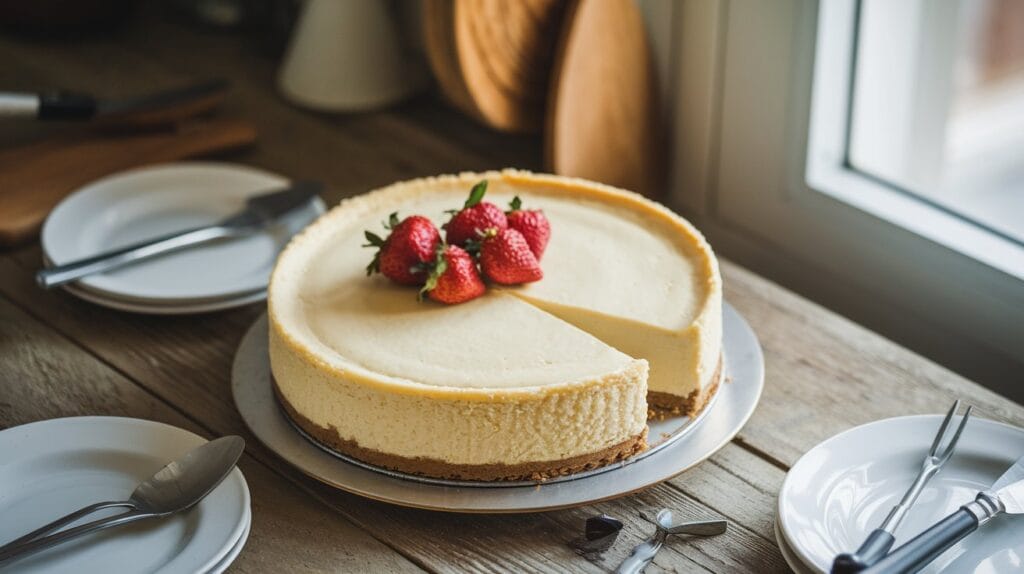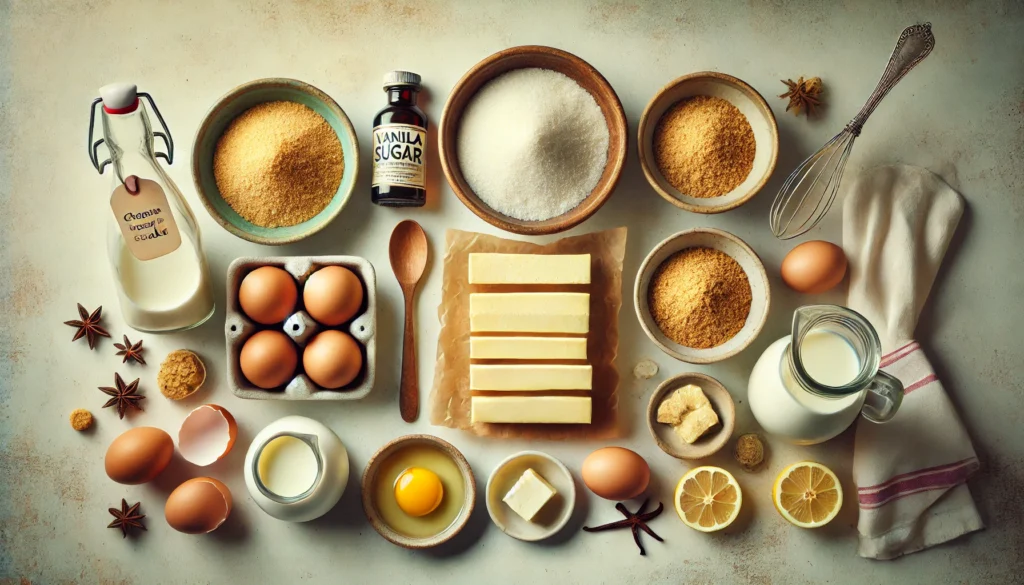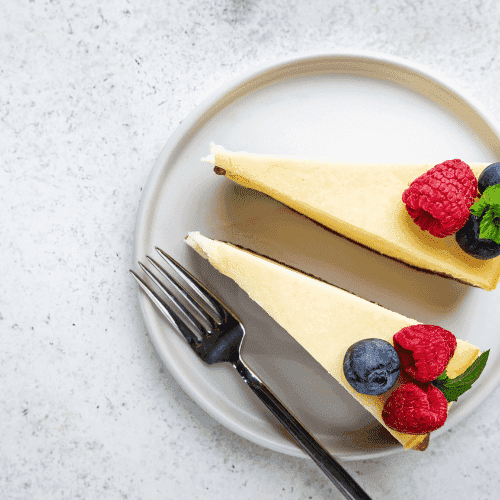Few desserts hold the iconic status that a Classic New York cheesecake does. Known for its rich, creamy texture and tangy flavor, this baked delicacy has been a staple in New York City’s culinary scene for decades. Whether you’re an aspiring baker or a seasoned chef, mastering the homemade cheesecake is a rewarding experience. In this guide, we’ll not only share a baked cheesecake recipe but also explore its history, tips for the perfect texture, and more.
Let’s dive into the details of how to make this unforgettable dessert from scratch!
What Makes New York Cheesecake Special?
New York cheesecake stands out for its dense, creamy consistency and subtle tanginess, thanks to full-fat cream cheese and minimal additional ingredients. Unlike lighter cheesecakes that may incorporate whipped cream or gelatin, Classic New York cheesecake relies on a simple blend of cream cheese, sugar, eggs, and vanilla, baked to perfection.
A baked cheesecake recipe is essential to achieving the signature texture of New York cheesecake. This contrasts with no-bake cheesecakes, which tend to have a lighter, fluffier texture.
This cheesecake pairs beautifully with a simple dessert like our Small Batch Chocolate Chip Cookies or for a cinnamon-filled treat, try our Cinnamon Roll Pull-Apart Toast.

Ingredients for a Classic New York Cheesecake
The secret to a perfect Classic New York cheesecake is using high-quality ingredients and following the recipe closely. Here’s what you’ll need:
Crust Ingredients:
- 1 ½ cups graham cracker crumbs
- ¼ cup granulated sugar
- 6 tablespoons unsalted butter, melted
Filling Ingredients:
- 4 (8-ounce) packages full-fat cream cheese, softened
- 1 ¼ cups granulated sugar
- 4 large eggs
- 1 teaspoon pure vanilla extract
- 1 teaspoon lemon zest (optional)

Step-by-Step Recipe
Now, let’s break down the recipe into simple, actionable steps to create a delicious Classic New York cheesecake.
1. Preparing the Graham Cracker Crust
The crust adds texture and a slightly sweet, crunchy base for the creamy filling. Here’s how to make it:
Instructions:
- Preheat the oven to 350°F (175°C).
- Combine the graham cracker crumbs, sugar, and melted butter in a bowl.
- Press the mixture evenly into the bottom of a 9-inch springform pan.
- Bake for 10 minutes, then remove and allow the crust to cool.
2. Making the Cream Cheese Filling
Instructions:
- Reduce oven temperature to 325°F (160°C).
- In a large bowl, beat the softened cream cheese with an electric mixer until smooth and creamy.
- Gradually add sugar and vanilla extract, continuing to beat until fully incorporated.
- Add eggs one at a time, beating on low speed to avoid overmixing. This prevents air bubbles and ensures a smooth, dense texture.
- Stir in the lemon zest for a bright, tangy flavor (optional).
3. Baking the Cheesecake
Instructions:
- Pour the cream cheese filling over the cooled graham cracker crust.
- Wrap the outside of the springform pan with aluminum foil to prevent water from seeping into the crust during the water bath.
- Place the springform pan inside a larger roasting pan, and fill the roasting pan with hot water until it reaches halfway up the side of the springform pan.
- Bake for 60-70 minutes, or until the center is just set but still slightly jiggly.
- Turn off the oven and crack the door open. Let the cheesecake cool in the oven for one hour to prevent cracking.
- Remove from the oven and refrigerate for at least 4 hours or overnight for the best texture.
Tips for Perfect Cheesecake Texture
The hallmark of a Classic New York cheesecake is its luxurious, dense texture. Achieving this requires attention to detail:
- Use room-temperature ingredients: This helps ensure that the batter mixes smoothly without lumps.
- Don’t overmix the batter: Overmixing can incorporate too much air, leading to a lighter, less dense texture.
- Bake in a water bath: This keeps the cheesecake moist and helps cook it evenly, preventing cracks on the surface.
- Check for doneness: The center should still have a slight jiggle when it’s done baking. It will continue to set as it cools.
Avoiding Common Cheesecake Mistakes
Even experienced bakers can run into problems when making cheesecake. Here are some common pitfalls and how to avoid them:
- Cracking: Cracks often result from rapid temperature changes. Always allow your cheesecake to cool gradually in the oven after baking.
- Soggy crust: Wrapping your springform pan with aluminum foil prevents water from the bath from seeping into the crust.
- Overbaking: A cheesecake that is overbaked becomes dry and loses its signature creaminess. It’s better to underbake slightly than overbake.

Classic New York Cheesecake Recipe
Ingredients
- 1 ½ cups graham cracker crumbs
- ¼ cup granulated sugar
- 6 tablespoons unsalted butter melted
- Filling Ingredients:
- 4 8-ounce packages full-fat cream cheese, softened
- 1 ¼ cups granulated sugar
- 4 large eggs
- 1 teaspoon pure vanilla extract
- 1 teaspoon lemon zest optional
Instructions
- Preparing the Graham Cracker Crust:
- Preheat oven to 350°F (175°C).
- Mix graham cracker crumbs, sugar, and melted butter in a bowl.
- Press the crumb mixture into the bottom of a 9-inch springform pan.
- Bake for 10 minutes and allow the crust to cool.
- Making the Cream Cheese Filling:
- Reduce oven temperature to 325°F (160°C).
- In a large bowl, beat softened cream cheese until smooth.
- Gradually add sugar and vanilla extract, mixing until fully incorporated.
- Add eggs one at a time, mixing on low speed to avoid overmixing.
- Stir in lemon zest (optional).
- Baking the Cheesecake:
- Pour cream cheese filling over the cooled crust.
- Wrap the springform pan with aluminum foil and place it in a larger roasting pan.
- Add hot water to the roasting pan (halfway up the sides of the springform pan).
- Bake for 60-70 minutes until the center is just set but still slightly jiggly.
- Turn off the oven and crack the door open, letting the cheesecake cool in the oven for one hour.
- Refrigerate for at least 4 hours, preferably overnight.
Notes
Always bake the cheesecake in a water bath to prevent cracks.
If you prefer a slightly tangier flavor, you can add a tablespoon of sour cream to the filling.
Nutrition
Serving Suggestions and Toppings
The beauty of a Classic New York cheesecake is that it’s perfect on its own, but you can also enhance it with toppings. Here are some classic and creative ideas:
Classic Toppings:
- Fresh berries (strawberries, raspberries, blueberries)
- Cherry compote
- Sour cream glaze
Creative Toppings:
- Salted caramel drizzle
- Chocolate ganache
- Crushed cookies or toffee
Feel free to experiment with different toppings to match your mood or the occasion.
How to Store and Freeze New York Cheesecake
Cheesecake is best served chilled, but if you have leftovers, it stores and freezes beautifully.
Storing in the Refrigerator:
- Cover your cheesecake with plastic wrap or store it in an airtight container.
- It will keep fresh in the fridge for up to 5 days.
Freezing Cheesecake:
- To freeze, slice the cheesecake into individual portions. Wrap each slice tightly in plastic wrap, then place them in a freezer-safe bag or container.
- Cheesecake can be frozen for up to 3 months. To thaw, simply transfer the slices to the refrigerator overnight.
Flavor Variations for New York Cheesecake
While the classic New York cheesecake is perfect as is, here are a few variations you can try if you’re feeling adventurous:
- Berry Topping: Add a layer of fresh strawberries, raspberries, or blueberries on top before serving for a fruity twist.
- Chocolate Swirl: Mix some melted chocolate into part of the batter and swirl it into the cheesecake before baking for a rich, decadent treat.
- Lemon Zest: For a refreshing zing, add a tablespoon of lemon zest to the batter along with the vanilla extract.
Conclusion
A Classic New York cheesecake is the ultimate dessert for anyone who loves rich, creamy, and indulgent treats. While it requires some patience and care to get it just right, the reward is well worth the effort. With this detailed recipe and tips, you’ll be able to bake a cheesecake that’s as good as any you’ll find in a New York City bakery.
Whether you’re making it for a special occasion or simply treating yourself, this baked cheesecake recipe will become your go-to for a luxurious dessert.
FAQs
1. Why did my cheesecake crack during baking?
Cracks are often caused by rapid cooling or overbaking. To prevent cracks, allow the cheesecake to cool gradually in the oven with the door slightly open.
2. Can I make this cheesecake ahead of time?
Yes! In fact, cheesecake often tastes better the next day after it has had time to chill and the flavors have developed.
3. How long should I chill the cheesecake before serving?
For the best texture, chill the cheesecake for at least 4 hours, but overnight is ideal.
4. Can I freeze New York cheesecake?
Yes, cheesecake freezes very well. Wrap individual slices in plastic wrap and store them in a freezer-safe container for up to 3 months.
5. How do I avoid a soggy graham cracker crust?
Make sure to wrap the bottom of your springform pan with aluminum foil to prevent water from the water bath from seeping into the crust.
Call to Action
What dish are you most excited to try next? Have you ever made a unique twist on this classic cheesecake recipe? We’d love to hear about your culinary adventures—share your experiences in the comments below! And don’t forget to subscribe to our blog for more delicious recipes and expert baking tips. If you try this cheesecake recipe, be sure to share it on social media and tag us!

